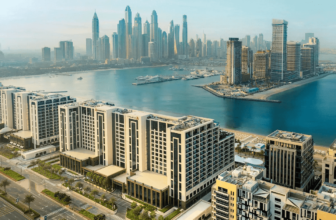
Starting Point: Delhi
As the capital city and starting point of your journey, Delhi is a fascinating mix of ancient history and modern dynamism. The city is divided into two parts—Old Delhi and New Delhi—each offering a unique experience.
Must-Visit Attractions in Delhi:
- Red Fort: A UNESCO World Heritage Site, this imposing red sandstone fort was once the residence of Mughal emperors. It offers a peek into Delhi’s Mughal past and hosts a spectacular sound and light show in the evenings.
- Qutub Minar: One of the tallest minarets in the world, Qutub Minar is an architectural marvel from the 12th century and a must-see landmark.
- India Gate: This majestic war memorial is a popular gathering place for tourists and locals, especially during the evenings when the monument is beautifully illuminated.
- Humayun’s Tomb: A precursor to the Taj Mahal, this tomb is an excellent example of Mughal architecture and is surrounded by lush gardens.
- Lotus Temple: Known for its distinctive flower-shaped design, this temple is a place for meditation and spiritual reflection, open to all religions.
Delhi’s vibrant street markets, such as Chandni Chowk, are also worth exploring, offering a riot of colors, smells, and flavors that encapsulate the essence of India. From street food like spicy chaat to bustling bazaars selling everything from jewelry to textiles, Delhi is a sensory feast.
The Journey from Delhi to Jaipur
The road trip from Delhi to Jaipur covers a distance of approximately 280 kilometers and takes about 5-6 hours by car. While you can choose to travel by train or bus, many prefer the freedom and scenic experience of a road trip. Along the way, you’ll witness the changing landscapes of northern India—from Delhi’s urban sprawl to Rajasthan’s arid beauty.
En Route Stopovers:
- Neemrana Fort: Located about halfway between Delhi and Jaipur, Neemrana Fort is a beautiful heritage hotel where you can stop for lunch or explore the fort’s history and architecture. This 15th-century fort offers stunning views of the surrounding countryside.
- Sariska National Park: If you’re a wildlife enthusiast, consider a detour to Sariska National Park, located slightly off the main route. Known for its tiger reserve, Sariska is a great spot for a wildlife safari.
Destination: Jaipur – The Pink City
Jaipur, the capital of Rajasthan, is often referred to as the Pink City because of the pink hue of its buildings, a symbol of hospitality. As soon as you arrive, Jaipur’s regal charm and rich history become evident. The city, founded by Maharaja Jai Singh II, is a treasure trove of palaces, forts, and vibrant markets that reflect the grandeur of its royal past.
Must-Visit Attractions in Jaipur:
- Amber Fort: Perched on a hilltop just outside the city, Amber Fort is a magnificent blend of Hindu and Mughal architecture. Visitors can either hike up to the fort or opt for an elephant ride, which adds a touch of royal nostalgia to the experience. The fort’s mirror work and intricate carvings are truly breathtaking.
- City Palace: In the heart of Jaipur lies the City Palace, a sprawling complex that includes royal residences, courtyards, and museums. The intricate architecture and rich history of the palace make it a must-visit. The museum houses an impressive collection of royal costumes, textiles, and armory.
- Hawa Mahal (Palace of Winds): This five-story palace with 953 small windows was built to allow royal women to observe street festivals while remaining unseen. Its honeycomb-like façade is one of Jaipur’s most photographed landmarks.
- Jantar Mantar: A UNESCO World Heritage Site, Jantar Mantar is an astronomical observatory built by Maharaja Jai Singh II. It features giant instruments designed to measure time, track celestial bodies, and predict eclipses.
Jaipur’s Vibrant Culture:
Beyond its historic sites, Jaipur is known for its vibrant culture and traditional Rajasthani lifestyle. The city is famous for its markets, where you can shop for handicrafts, textiles, jewelry, and pottery. Johari Bazaar is the best place to pick up some traditional silver jewelry, while Bapu Bazaar offers an array of colorful textiles and leather products.
Don’t miss the chance to try local Rajasthani cuisine, including dal baati churma, ghewar, and laal maas, which will tantalize your taste buds with their unique flavors.
Also Know About Golden Triangle Package Tour.
Conclusion:
The Delhi to Jaipur tour is more than just a travel route; it’s a journey through time, offering a glimpse into India’s diverse cultural and historical heritage. From the bustling streets of Delhi to the royal grandeur of Jaipur, this iconic route allows travelers to experience the contrast between modernity and tradition, city life and royal splendor.





